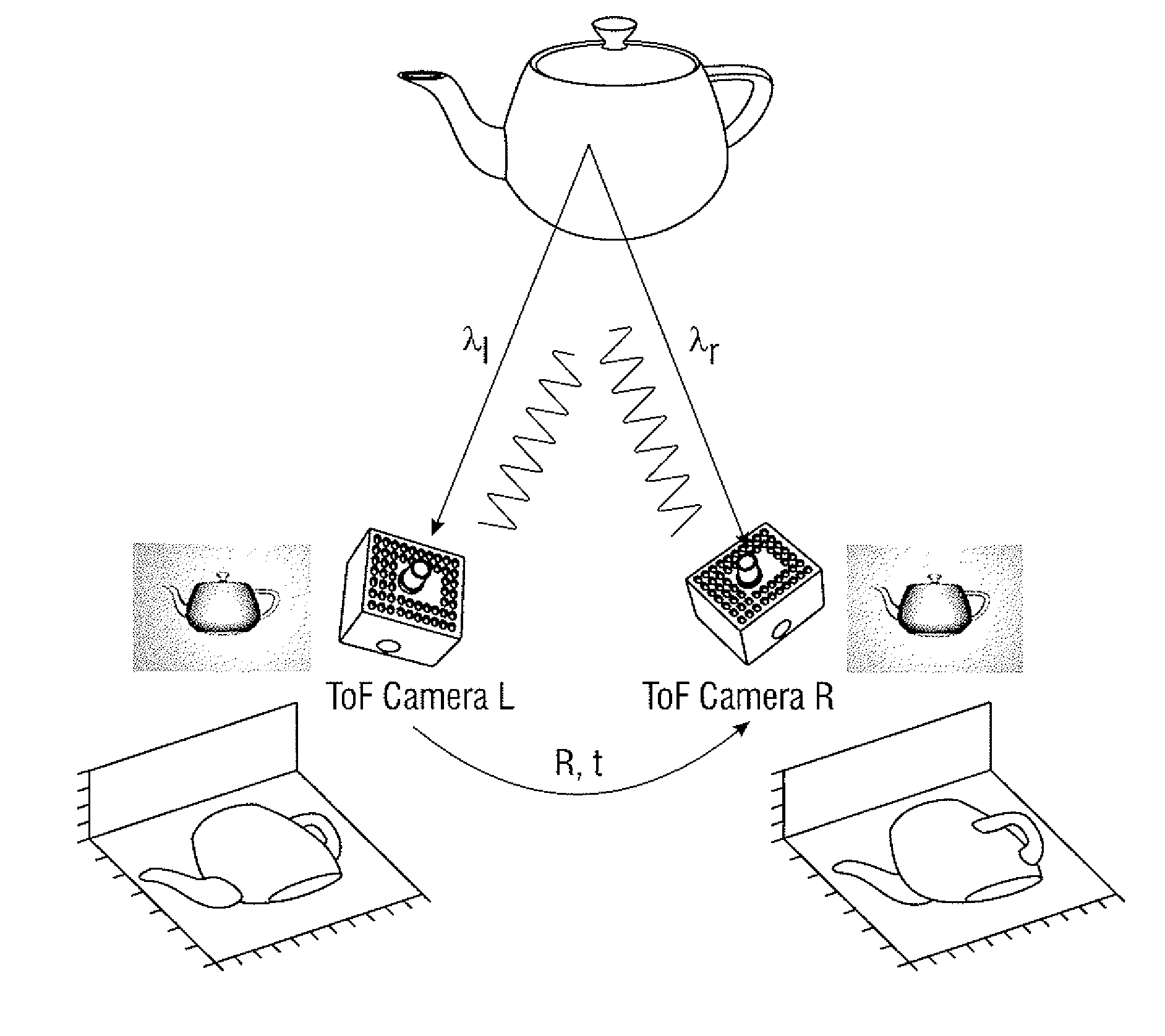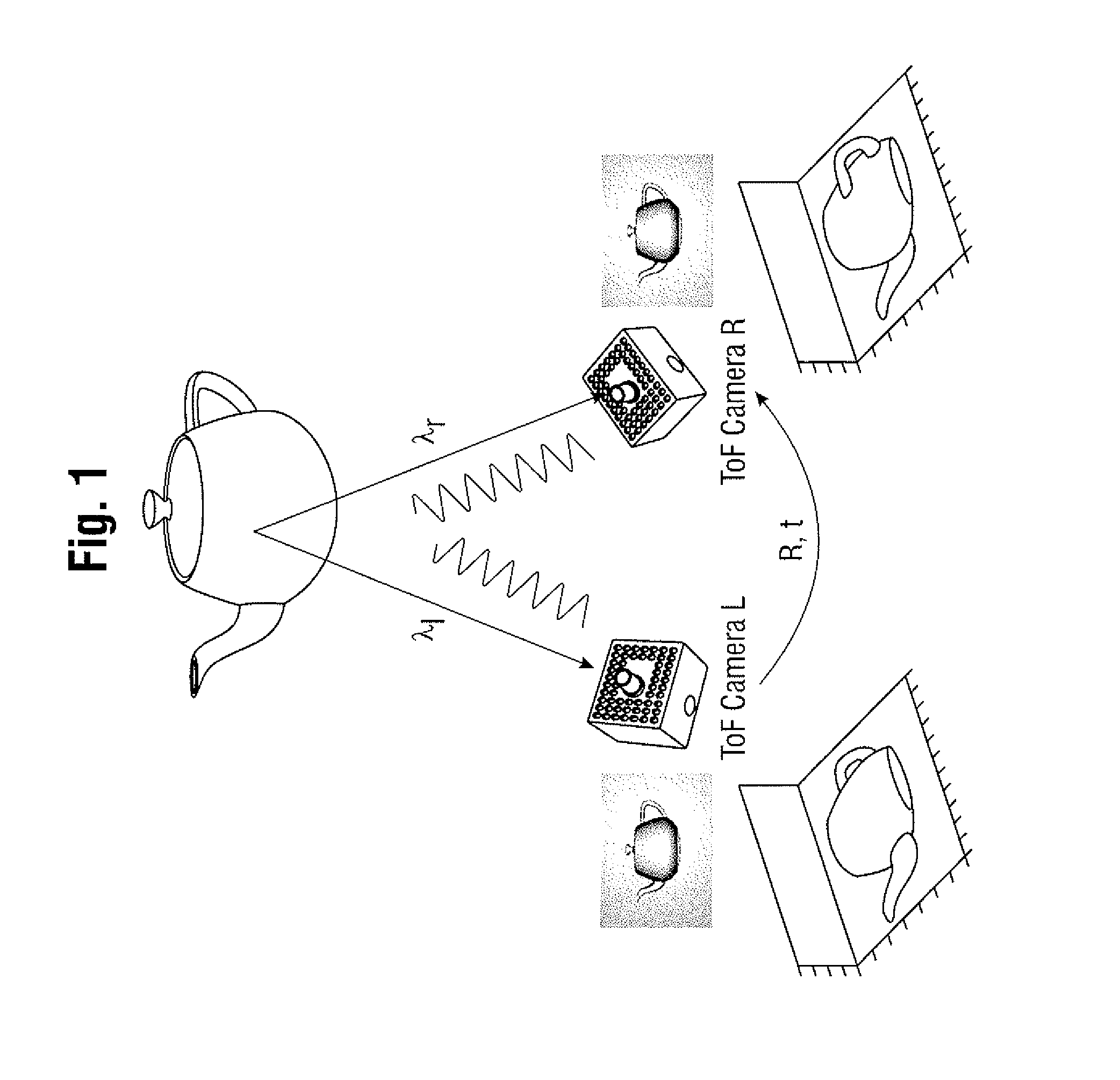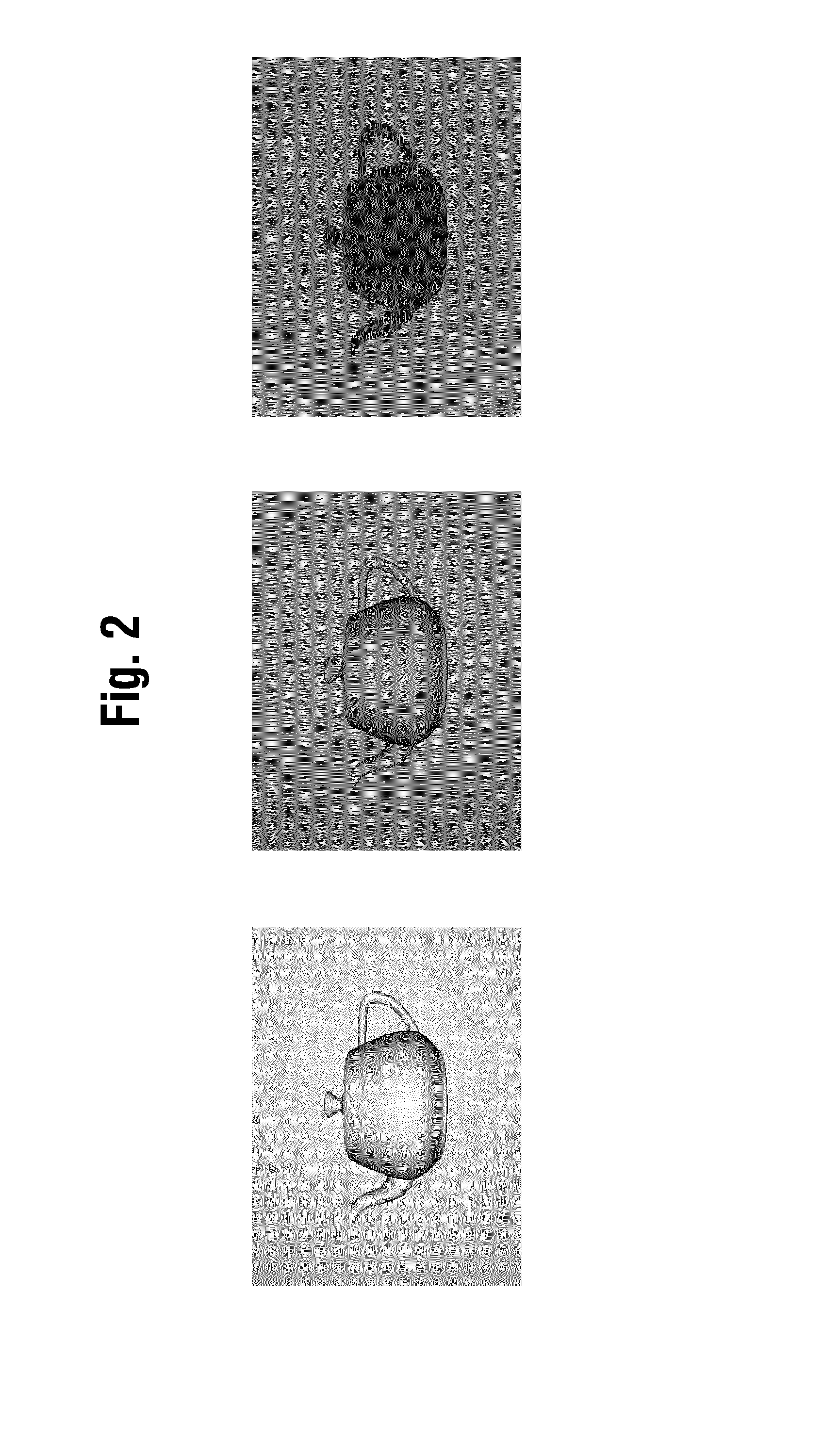Method of Enhanced Depth Image Acquisition
a depth image and depth image technology, applied in the field of enhanced depth image acquisition, can solve the problems of increasing the cost and complexity of the image acquisition system overall, affecting the resolution of current commercially available devices, and requiring a large amount of laborious calibration, so as to reduce the noise of tof cameras, improve the depth image acquisition procedure, and optimise the depth image formation
- Summary
- Abstract
- Description
- Claims
- Application Information
AI Technical Summary
Benefits of technology
Problems solved by technology
Method used
Image
Examples
Embodiment Construction
Monocular ToF Camera
[0019]The present invention is based on a known mechanism used by individual ToF cameras to recover the depth images.
[0020]To facilitate the measurement of the traveled time (or the time of flight), the intensity of the emitted light is modulated with a sinusoidal signal. With the right choice of modulating frequency, the traveled time required to estimate the distance is directly and unambiguously recovered from the phase shift between the emitted and received signals.
[0021]The emitted g(t) and the received signal S(t) may be expressed as sinusoidals of the form:
g(t)=A·cos(ω·t)+B, (1)
S(t)=A′·cos(ω·t+φ)+B′, (2)
where A represents the amplitude and B the offset of the emitted signal (respectively A′ and B′ for the received signal), ω is the modulation frequency in radians per second, and φ is the phase shift of the received signal with respect to the emitted signal.
[0022]The depth measurement for each pixel of the CMOS / CCD sensor is found by measuring the phase s...
PUM
 Login to View More
Login to View More Abstract
Description
Claims
Application Information
 Login to View More
Login to View More - R&D
- Intellectual Property
- Life Sciences
- Materials
- Tech Scout
- Unparalleled Data Quality
- Higher Quality Content
- 60% Fewer Hallucinations
Browse by: Latest US Patents, China's latest patents, Technical Efficacy Thesaurus, Application Domain, Technology Topic, Popular Technical Reports.
© 2025 PatSnap. All rights reserved.Legal|Privacy policy|Modern Slavery Act Transparency Statement|Sitemap|About US| Contact US: help@patsnap.com



